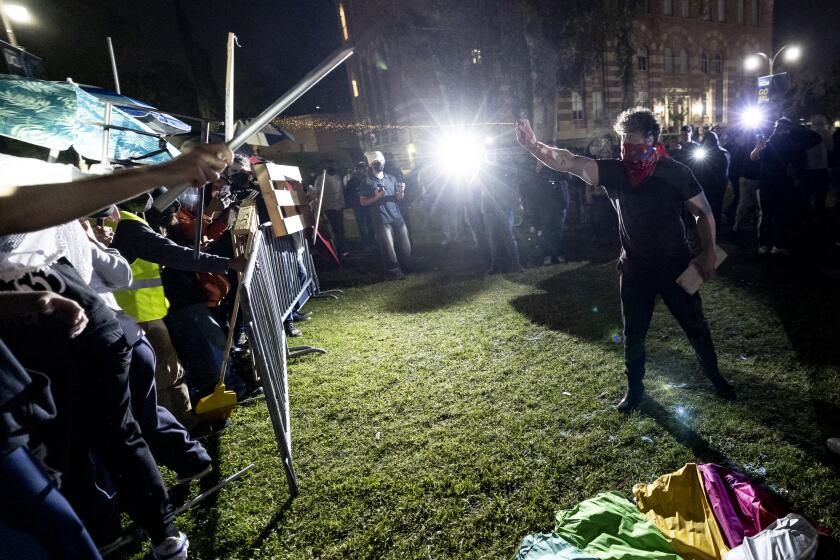For two young journalists, showdown at UCLA camp was baptism by fire
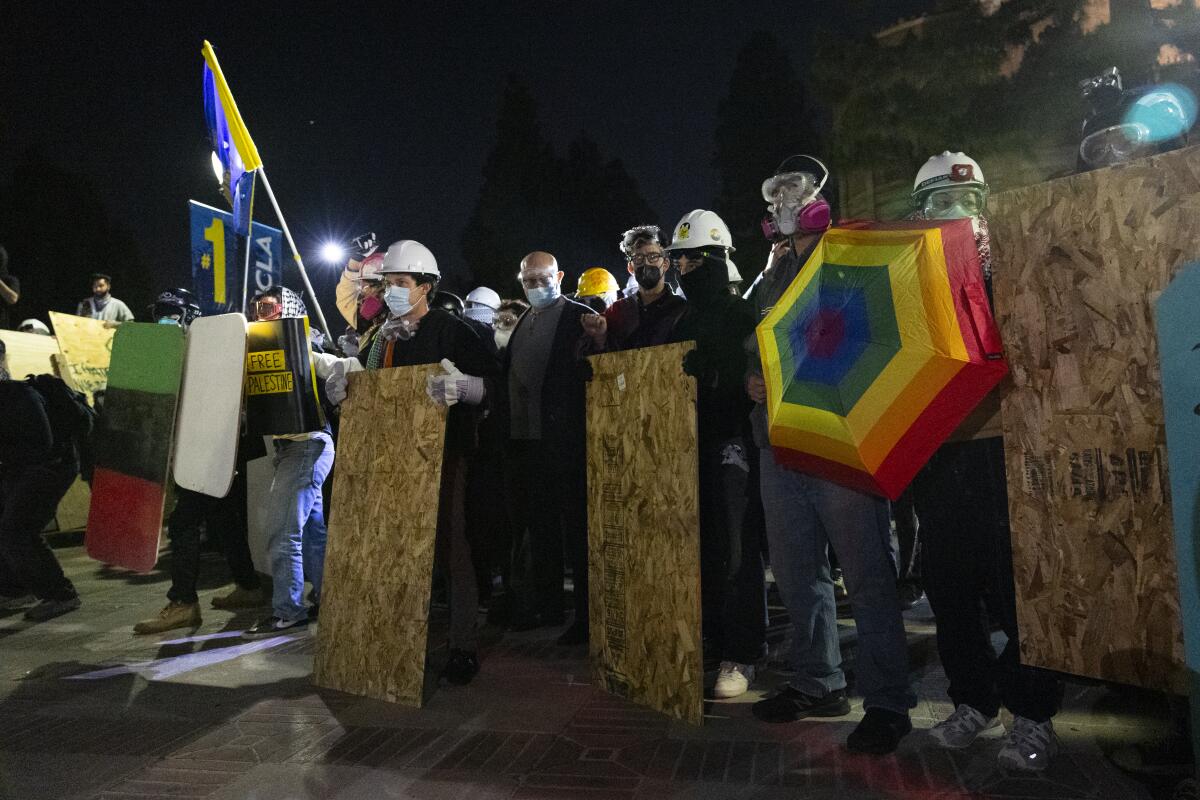
- Share via
By the time police officers breached the pro-Palestinian encampment at UCLA on Thursday morning, there were only about a dozen journalists there on assignment to document the final showdown at a space that for nearly a week had played host to both peaceful student protest and attacks by violent outsiders.
The confrontation would last for hours. Hundreds of arrests would be made, and blood would flow. For two young journalists new to the profession, it was a baptism by fire.
Staff and freelance reporters and photographers were there representing mainstream outlets including the Los Angeles Times, Reuters and LAist. And then there were Taylor Parise and Caylo Seals of the Corsair, Santa Monica College’s tiny school newspaper.
UCLA will bring in a new chief safety officer after lapses in handling protests that culminated in a mob attack against a pro-Palestinian student encampment.
It was the assignment of a lifetime for the two young journalists. Seals, a 21-year-old photographer who moved to Los Angeles from Colorado about three years ago, had shot a few other major events, including an abortion rights rally in downtown L.A. that Vice President Kamala Harris led in April 2023.
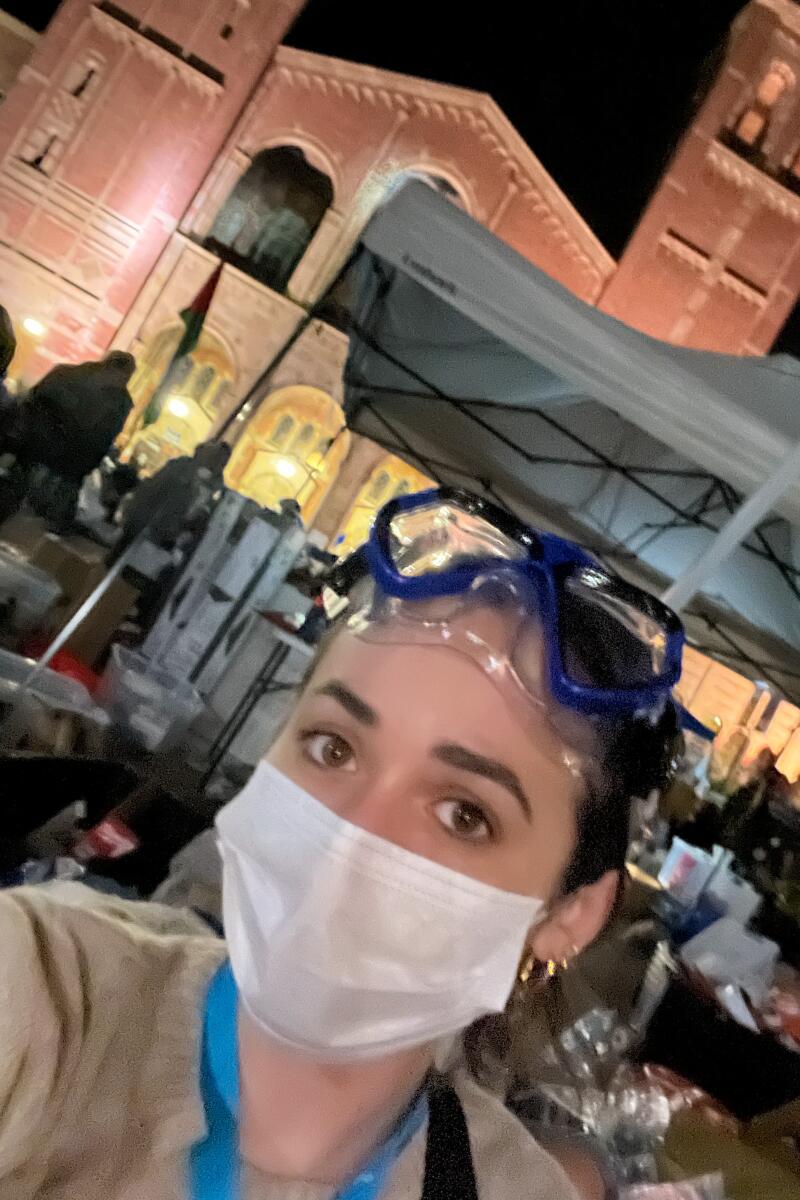
Reporter Taylor Parise inside the pro-Palestinian encampment Thursday. (Taylor Parise)
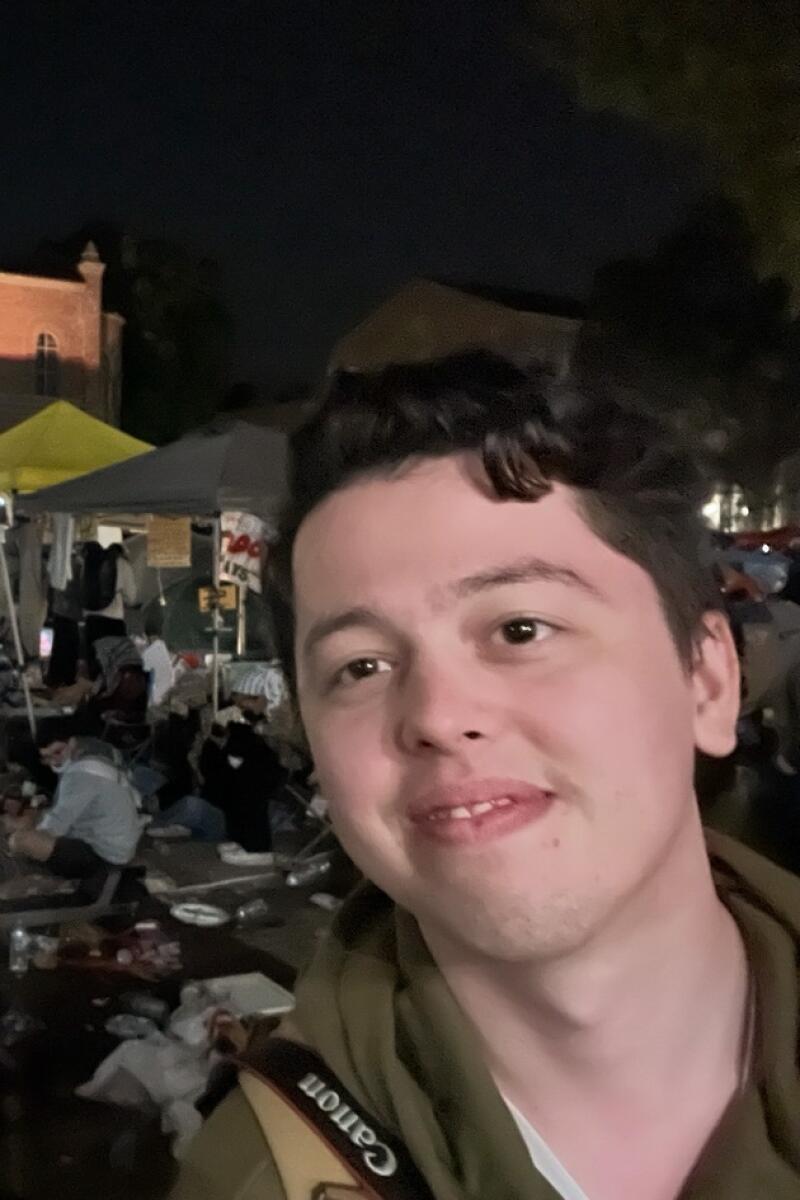
Photographer Caylo Seals said initial nerves faded as he covered the dismantling of the camp. (Taylor Parise)
For Parise, a 24-year-old reporter who moved west from Kansas when she was 18 to study theater before deciding to pursue journalism, the last stand of the UCLA encampment was the first prominent news event she had ever covered on the ground.
This is her third semester working for the Corsair, and until a few months ago she was arts and entertainment editor, a position that allowed her to write about important issues such as last year’s strikes by Hollywood writers and actors, but mostly she reported from behind a computer screen.
“This is my first big breaking story,” she told The Times inside the encampment early Thursday morning during the hours-long lull between when police declared it an illegal assembly and when they began arresting the protesters inside.
When the two reporters got word on Wednesday afternoon that something was afoot at UCLA, Parise and Seals rushed to Westwood from a May Day protest they had been covering in Hollywood.
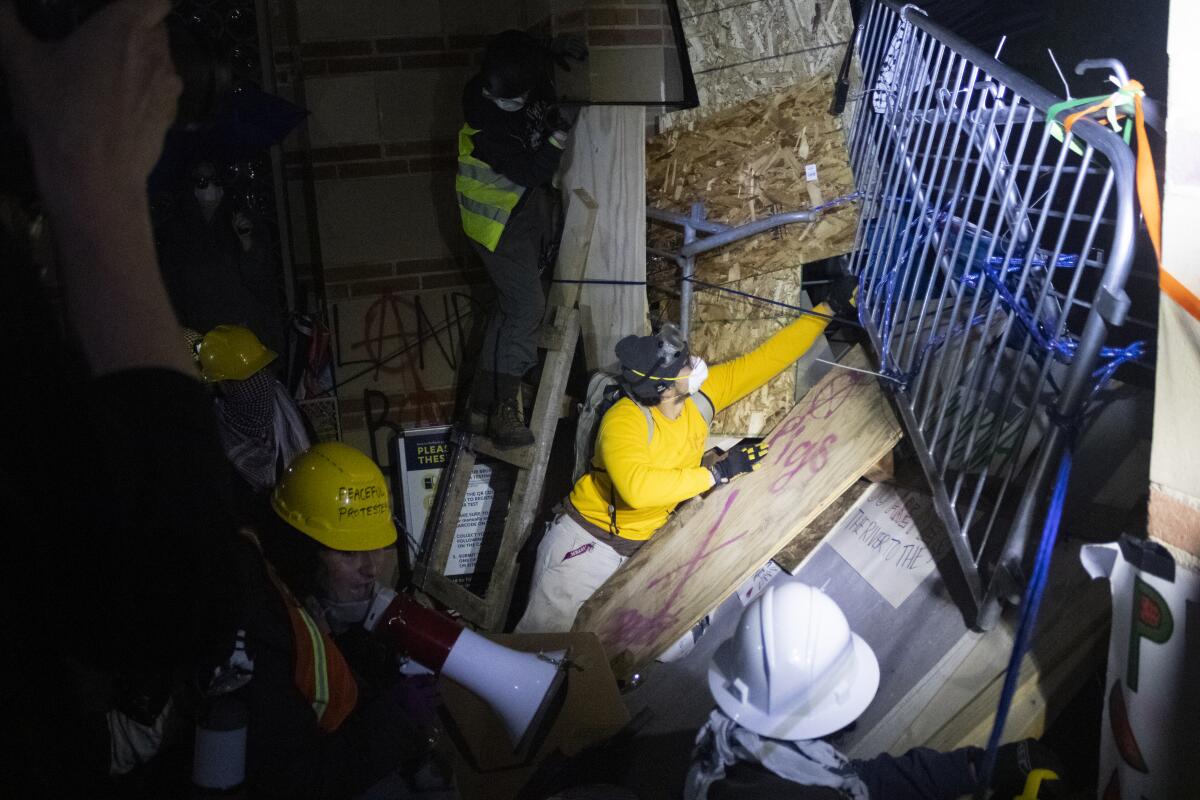
After arriving at the campus around 5:15 p.m., they tried repeatedly to enter the encampment via various entry points, but protesters were barring entry to outsiders. So they interviewed student supporters nearby and kept trying. Shortly after 11 p.m., a former Corsair photo editor gained access to the space and vouched for them, which allowed them to get in before protesters blocked the entrances in a doomed attempt to keep police at bay.
“They were chaining the steps in behind us,” Seals said, “so we didn’t have a way out, really.”
Two other Corsair photographers, Seals said, were there to capture the event for the community college newspaper, which has a staff of about 25. One was outside the encampment near the police, and the other was with the hundreds of protesters who stood outside the encampment into the wee hours of Thursday morning, chanting “Free Palestine” and “You don’t scare us, we’re not leaving.”
What Parise and Seals didn’t know at the time was that, once inside, they would be there for six more hours. And they were woefully unprepared.
As the hour grew late and temperatures dipped into the low 50s, Parise, without long sleeves, was left to shiver in her T-shirt. And although, as Seals said, he and Parise had mentally prepared for the potential they’d be arrested when police moved in, neither had the helmets, masks or other equipment that most protesters and other journalists wore to protect them from rubber projectiles, tear gas and other potential threats. Parise did don a pair of goggles that she found on the ground inside the encampment.
But the pair didn’t have food, or even extra water.
“We didn’t eat all day,” Parise said. “We were running on fumes.”
By the end, an app on the student’s phone said she had walked 13 miles.
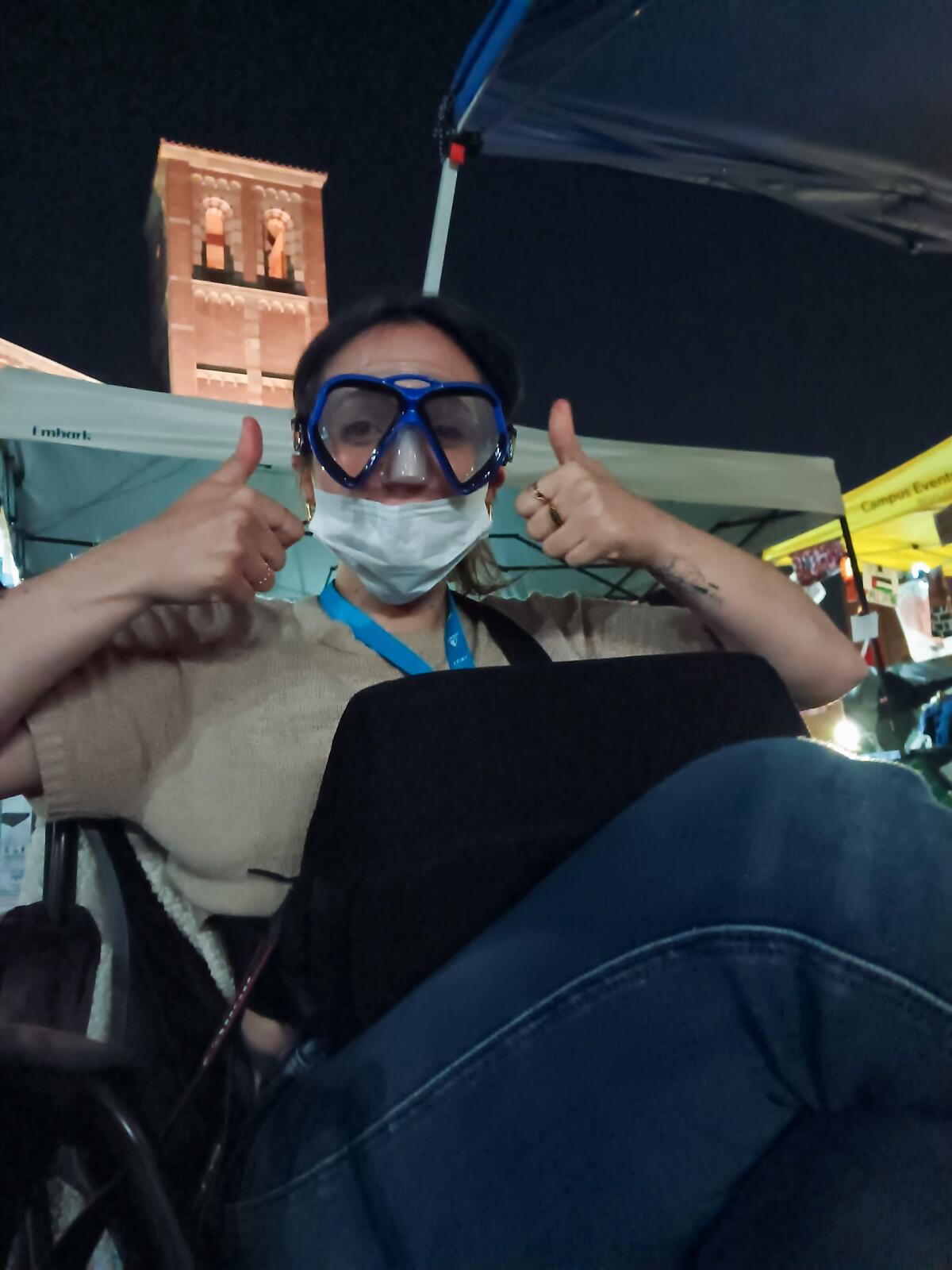
Yet they got their story — without being hurt or arrested. They made the decision to stick near other, more experienced members of the press for strength in numbers, which provided some comfort. Still, it was a “very strange” experience, according to Parise, who said she was impressed by the level of organization and sense of community that seemed to permeate the encampment.
“You’re in this bubble once you enter inside,” she said. “It does give you this end of the world and all or nothing mentality. … It’s an almost post-apocalyptic feeling.”
Seals said he “went into it super-nervous” that they could get arrested or hurt and at times felt hemmed in. But that all faded once the showdown with police began.
“As soon as stuff started happening, this sense of zen came over me, and that sense of claustrophobia went away,” he said. “I wonder if it’s just that separation where you have the camera in front of your face.”
Seals said he ended up in one dicey situation where he was trapped among some of the more aggressive demonstrators, one of whom screamed at him and hit his camera with a board. But, ultimately, the Corsair journalists made it back home unscathed if a little worse for wear, with adrenaline pumping through their veins.
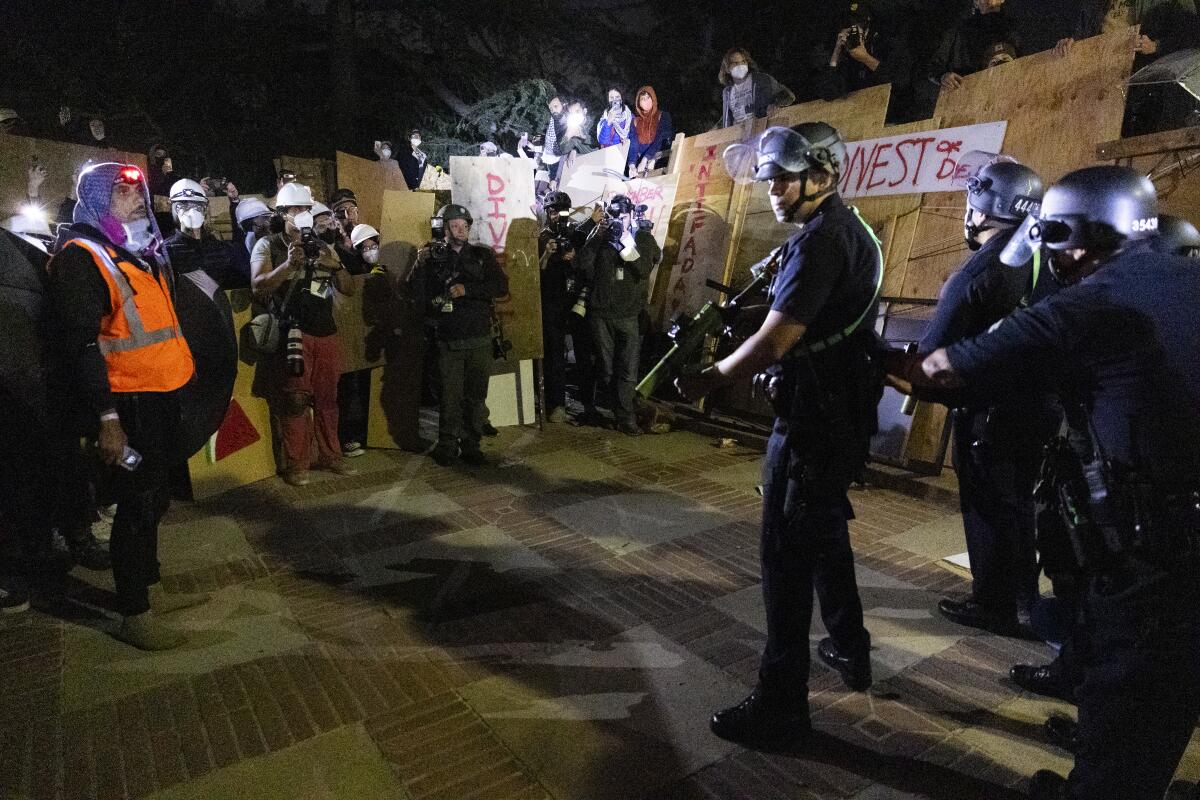
They skipped class Friday to write up the story and edit their photos. Within hours, their work was posted on the Corsair website. Parise’s story ended with a quote from Mona, a UCLA student whom she interviewed in the pro-Palestinian encampment.
“At the end of the day, no matter what happens to the camp, no matter how the administration has neglected us, we will continue to pressure the university, because student voices can make an impact,” said Mona, who declined to give Parise her last name.
Similarly, Parise and Seals say they will carry the lessons they learned reporting last week as they develop as journalists.
“I was pretty proud that we had gotten access because some photojournalists I admire were on the outside and didn’t get access,” Seals said. “I thought it was going to be a really good story, and it turned out to be.”
More to Read
Sign up for Essential California
The most important California stories and recommendations in your inbox every morning.
You may occasionally receive promotional content from the Los Angeles Times.
